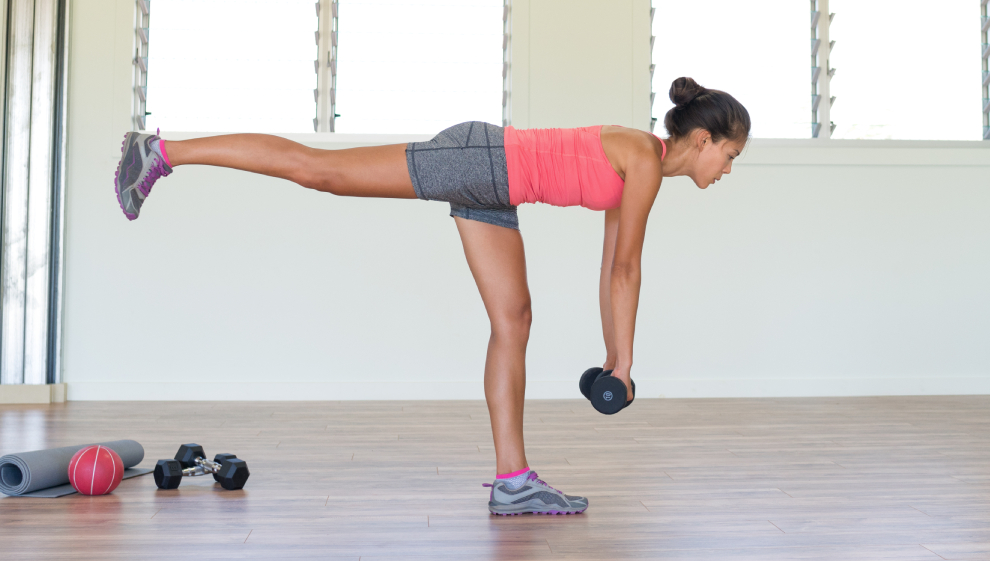How to prevent and treat common sports injuries
- Overview
Injury within sport is, unfortunately, a common occurrence. There's a heavy reliance on post-injury treatment, but many are unaware that there are preventative measures that can help to reduce the chances of serious injury.
Here are three of the most common sports injuries and how to prevent them.
1. Ankle sprains
The biggest risk factor for getting an ankle sprain during sport is having had a previous sprain. You may have ‘rolled’ your ankle in school for example, and this can lead to ongoing problems later on.
For some, strength may completely return, but for others – 70% of us in fact – this can turn into chronic ankle instability.
How to prevent and treat ankle sprains
Building stability is the most important thing to do when recovering from an ankle ligament injury, as strengthening and balance work can also minimise the risk of recurrent ankle sprains. It’s important to note that, although ligaments will heal to an extent, there is still a risk of re-spraining if strength and balance aren't addressed. Here are some things you can do:
- Work on your balance: Standing on one leg, on something soft and squishy like a bosu ball or balance pad, will help you to build strength and balance. If you’ve experienced a sprain, you’ll need to retrain the muscles and nervous system to work together again to reduce the risk of rolling your ankle again.
- Don’t neglect your calves: This is the main muscle group around the ankle, so strengthening it can help to build ankle resilience. Calf raises (seated and standing), calf presses and calf extensions can all help to increase strength in this specific area.
- Focus on the muscles on the outside of the ankle: We normally sprain our ankles on the outside (lateral ankle), so again building strength in these muscles (evertors) will support the area. To do this, you can tie a resistance band around a sturdy piece of equipment, wrap around the front of the toes and push your foot outwards. Return and repeat.
2. Knee injuries
One of the most serious knee injuries is an ACL (anterior cruciate ligament) tear, a common issue in football and skiing.
An ACL tear can happen when you twist suddenly on a bent knee or stationary foot, and it's one that you'll instantly recognise as you’ll experience physical symptoms such as knee swelling and difficulty walking/weight bearing.
It can be a frustrating injury as it results in instability of the knee – that feeling of your knee ‘giving way’. Sometimes knee surgery is needed, but other times it can be treated conservatively. This should be assessed by a professional, so that you know all of your options.
How to prevent and treat knee injuries
It’s about strengthening the quads and hamstrings to support the stability of the knee, as well as increasing your balance. You can do this through:

- squats, single-leg squats and jumping squats
- lunges and jumping lunges
- bridges and single-leg bridges
- single-leg deadlifts
- step ups
If this is part of conversative treatment, it’s important to build up strength in the area gradually, going from static to dynamic tasks, such as standing through to running to jumping/hopping. I'd advise that this be under the guidance of a physiotherapist.
3. Groin strain
Groin strains are really common in football as these types of injuries often occur due to a change of direction and cutting activities (fast change of movement when tackling). If muscles in this area are tensed too suddenly or quickly, they can strain or tear.
These injuries can be incredibly painful. Physical symptoms can include pain when moving your leg sideways, difficulty walking up and down stairs, and sometimes bruising on your inner thigh.
How to prevent and treat groin strain
Strengthen the inner thighs. Quads, hamstrings and glutes are all standard practice in the gym and support strength in the lower body, but in order to minimise the risk of injury to your groin, you need to focus on the adductor muscle group.
One study showed that professional footballers who completed adduction strengthening had a 43% reduced chance of a groin strain compared to those who didn’t.
Exercises to incorporate in your next leg day:
- Medial leg raise: Lie on the leg that you want to strengthen – you can place the other leg behind or in front for comfort – and raise the leg. This can be done both with either weights or your own bodyweight.
- Copenhagen hip adduction: Rest on your side, place the leg you want to strengthen on the floor, with the opposite leg on a bench. Rest on the elbow and, when ready, raise the lower leg up. You’ll notice a hip raise on the leg that is resting against the bench as you do this. This is adaptable to either beginner or advanced level depending on your confidence.
If
you’re experiencing any of these issues and would like physio for sports injuries, visit our physiotherapy page.
Related Video: Beginner Hip Rehab with Zahra
Lovely exercise. I can feel it opening my arthritic right hip. Now, less pain
Moira
This video is part of our on-demand 24/7 content. To view more videos and subscribe to our 24/7 virtual gym click here.
Last updated Thursday 28 September 2023
First published on Friday 9 December 2022

